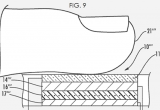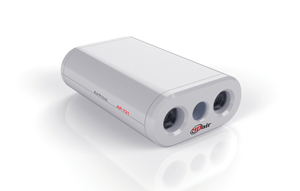One way biometric systems are failing
24 June, 2016
category: Biometrics, Corporate, Government
Jeff Stephens, Chief Technology Officer, Dignari
Biometric technology continues to advance at a rapid pace. Each year brings smaller sensors, more advanced algorithms, and new and innovative methods of capture. However, there remains a fundamental problem with too many of the biometric solutions offered by the vendor community today.
Most biometric products hitting the street continue to singularly focus on the sensor technology and underlying software. While these are core capabilities of the technology, and make up the “special sauce” of the vendor, the opportunity remains to fundamentally enhance the system.
The problem
Biometric devices currently lack sufficient, and valuable, feedback to the user of the system. The User Interface/User Experience aspect has historically been neglected and as a result, the systems do not realize the true potential offered by the underlying technology.
As devices have moved from the traditional model of being tethered to an operator’s workstation to an unattended, free-standing and flowing model, the problem has only gotten worse.
Individuals, who are expected to interact with these devices, have no idea what they are supposed to do or how they are to interact with the big shiny box standing in their path.
Too often the expectation is that systems integrators will “make it work” by fronting the system with a screen with user feedback. But, there are a number of issues with this approach.
Each integrator implements their own set of instructions, icons, and feedback to the user community. This not only introduces confusion for the end user but also negatively impacts the perceived value of the technology. If the feedback isn’t effective and the end user presents their biometric poorly, the biometric technology is then incorrectly blamed.
Systems are ripped out, word is spread that the technology doesn’t work, and business is lost simply due to poor interaction with the end user.
Instead of relying on the system integrators to provide adequate feedback to make the technology perform up to its potential, why not provide that as a core capability of the biometric technology out of the box?
Another issue with handing this off to the integrator is the placement of the feedback. Ideally, feedback to the user should be co-located with the sensor. Thereby creating the best opportunity to capture an ideal biometric sample. Unfortunately, this is not typically the case.
Think of a kiosk implementation with face and/or iris. By detaching the User Interface/User Experience from the sensor itself, you create a situation where the user is not presenting their biometric in an ideal fashion. Instead of looking at the sensor located above the kiosk screen, the user continues to look at the screen for instruction. This results in a limited opportunity to capture a quality biometric sample.
Instead, why not have the screen simply point to the sensor above and have the sensor itself present direct and engaging instruction and feedback to the user?
The feedback would include where the user should look, how long they should look, and when the process has completed. It shouldn’t be left up to the end user to switch between sensor and screen or to decipher various illuminations as an indication of what they are to do next.
The 0pportunity
There is a real opportunity for biometric technology vendors to differentiate themselves by implementing a beautifully designed, interactive, and engaging user experience directly from the sensor itself.
The artistic design of systems and the inherent power of usability have the potential to elevate a solution and spur adoption. For proof, look no further than Apple. By focusing on design and the user experience, Apple has been able to dominate the market and position itself as an innovator.
Instead of simply offering a camera in a box with a few illuminators and hoping for quality biometric capture, offer an engaging and effective user experience that positions the system for ideal performance and operational success.
Dignari is a consultancy with expertise serving the various missions of Homeland Security, including: border management and security, intelligence and targeting operations, transportation security and passenger facilitation and citizenship and immigration services.



